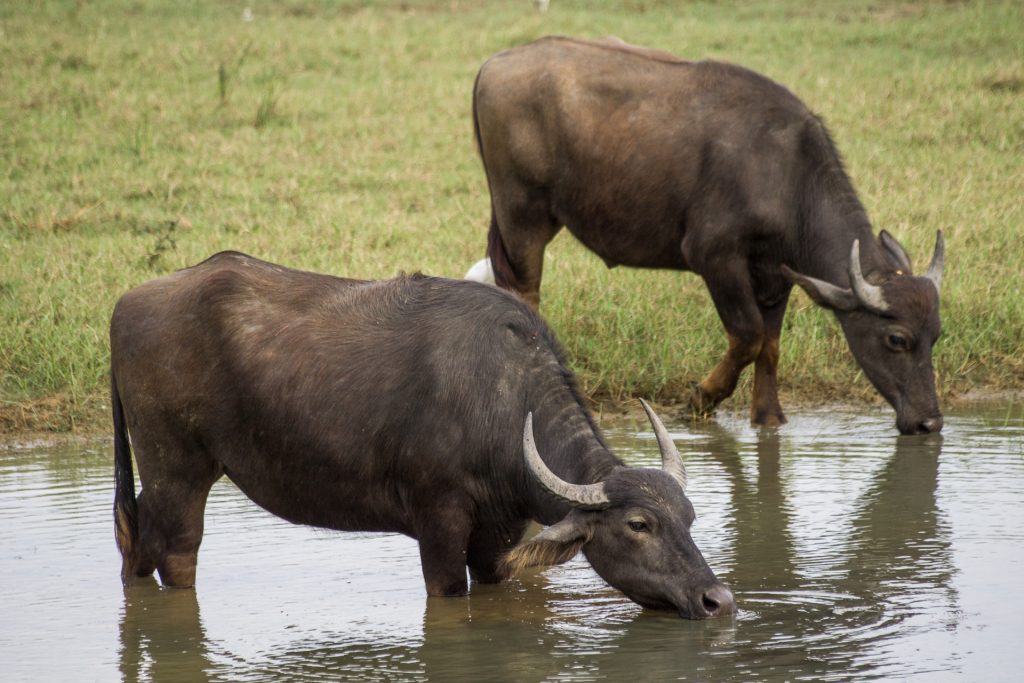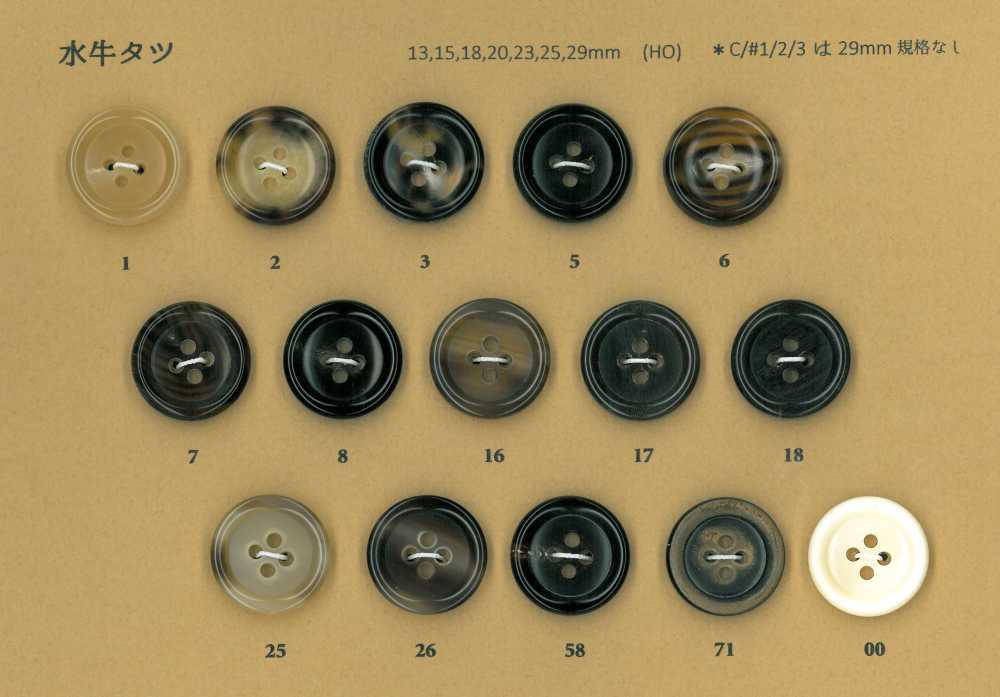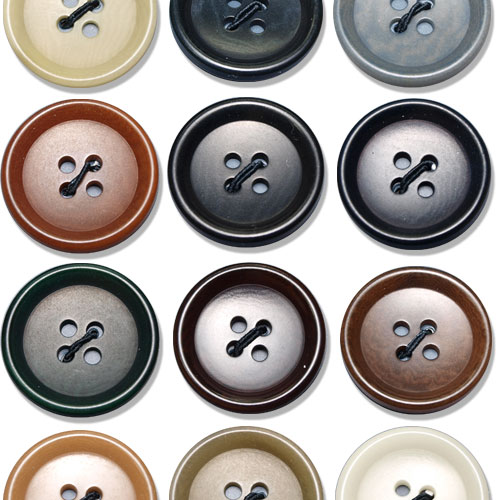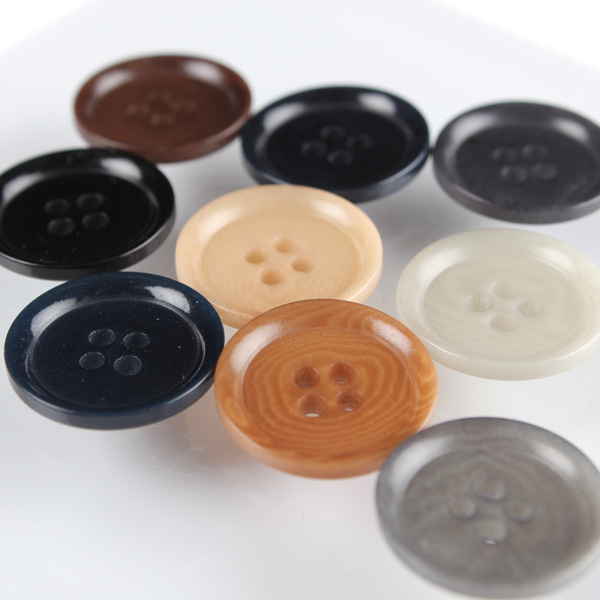High-class buttons: Buffalo horn buttons and nut buttons
Menswear has less variation in design than ladies’ wear, but that is why the choice of little details can change the impression of a garment.
This time, let’s discuss buffalo horn buttons and nut buttons, which are often used in men’s clothing.
Horn Button (Buffalo horn button)

Among the buttons used for dress wear in Japan, horn buttons are probably the most commonly used high-end buttons.
As the name suggests, these buttons are carved from buffalo horn. The basic color depends on the type of horn originally used.
The buffalo itself can be broadly classified into two types: the African buffalo, which lives in Africa, and the Asian buffalo, which lives in Asia. The difference between these two types is not specified on the button.


Comparing them like this, we can see the differences in the way their horns grow and the way their bodies are built. There are also differences in the finishing process, so there is a surprisingly wide range of color variation.

One of the charms of horn buttons is the beauty of the unique tortoiseshell-like pattern of the natural material.
Depending on the product number, there are shiny buttons that make the most of its slimy beauty, and matte buttons that blend in more easily with fabrics.

These buttons are made in Italy using different buffalo horns for the edge and the center. It is a high-class button that does not stand out and can be differentiated from other buttons.
There is one thing to note about these buffalo buttons.
The price may vary depending on the color.
The color and pattern of the horns are not constant. The amount of buttons that can be produced from the horns varies depending on the color and pattern, so the cost of the material itself differs. In general, beautiful colors such as amber and tortoiseshell tend to be more expensive than black.
Please note that the price of real buffalo horn buttons varies depending on the size and color of the buttons, even if they have the same product number.
Nut buttons (Palm tree nut)

The nut button is the most expensive button in men’s wear that is twinned with the genuine buffalo horn. These buttons are often used in Italian sartorial designs.
It is made from a palm tree called tagua palm, which is native to Ecuador.
The tagua palm is said to grow only in Ecuador. The fact that the tagua palm is still used for buttons suggests that its workability and durability make it suitable for buttons.

It seems to be used in woodworking as well.

Nut buttons, like horn buttons, are an unique natural materials. This is caused by the unevenness in the degree of dyeing due to the difference in the density of the fibers during dyeing.
Nut buttons do not have as strong a natural pattern as buffalo buttons, and are milky white in the pre-dyeing stage. Since they are dyed from there, they have higher dyeability than horn buttons made of the same natural fiber, and you can choose a color that matches your suit or other fabrics.
The texture of the button varies depending on the dyeing method and the degree of dyeing.
The Italian-made buttons shown above are characterized by a luxurious, lacquer-like luster. Among them, the light-colored ones with a strong wood-grain atmosphere have a warm and natural feel, while the darker and glossy colors have a glossy and luxurious look.

This one is made by a Japanese manufacturer.
It has a slightly more matte look than those made in Italy, and retains more of the original natural texture of the nuts.
As shown above, the same nut button looks quite different. Please choose the one with a more luxurious feel or the one with a more natural warmth, depending on the image of your clothes.
Conclusion
If you replace the regular buttons to nut buttons, it will give a totally different vibe.
The more basic the design of an item of clothing, the more the impression of that item of clothing will change drastically by using different trims.
For more information about nut and horn buttons, please take a look at ApparelX’s button product list.


We provide apparel materials and fabrics from Japan to the world on Global B2B Apparel Sourcing Platform “ApparelX“.
This website provides information on apparel materials and the apparel industry in Japan.
- How to purchase WALDES® Zippers
- Kamishiraishi ✨ Handcrafted by Japanese Artisans – Brass Hardware Buckle
- NIFCO Buckles & Accessories Collection – Mountain-Style Outdoor Fashion
- Did You Know? How to Read the Waldes Asahi Zipper Color Card
-
【 WALDES 】 Gaining Popularity in Korea!
Let’s Learn About WALDES Zippers (Asahi Zipper)

